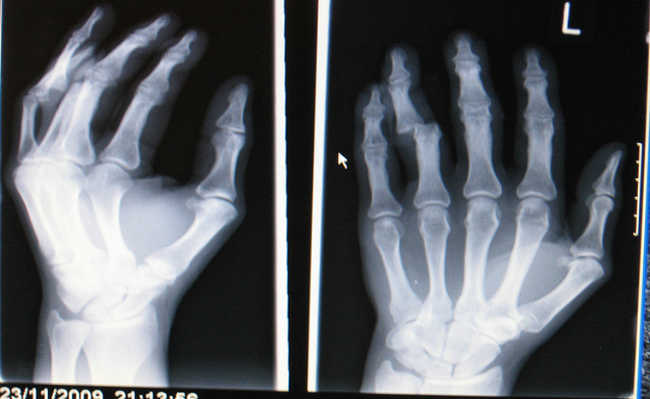X-ray plate is recyclable. See how to discard
As x-ray plates contain silver it is recommended that you do not throw them directly into the trash.

X-rays, or x-rays as they are commonly known, are widely used in the medical field to identify trauma and injuries in patients. As these tests are very important in a person's health history, they are commonly kept for a long time, and when they are no longer so useful, they end up being discarded without proper care. But this carefree way of throwing the sheets away causes them to end up in landfills and cause several problems, as they contaminate the soil and the water table, in addition to causing other problems.
The importance of correct disposal of radiographs is due to two factors. The first is that they are made from a sheet of plastic called acetate. And the second is that this plate is covered with a thin layer of light-sensitive silver grains. Plastic poses risks to the environment, taking over a hundred years to decompose in nature, not to mention that it is a direct petroleum derivative, whose extraction brings environmental problems in terms of greenhouse gases. Silver, as well as other heavy metals, is highly polluting and harmful to health, as it accumulates in the body, causing kidney, motor and neurological problems. Its release into the environment is prohibited by the norms established by the National Health Surveillance Agency (Anvisa) and by the National Environment Council (Conama). The table below shows the limiting concentrations for the presence of heavy metals in the environment established by the National Environmental Council:
The danger starts with the revelation
To make the image visible, it needs to be developed by reacting a film of silver grains with hydroquinone, a developing agent. Then, the film receives a bath of sodium carbonate and sodium bisulfite, which prevents the decomposition of the hydroquinone. So that the image does not fade quickly, a fixative solution of ammonium thiosulfate, sodium sulfate or EDTA (ethylenediamine tetraacetic acid) is used, which removes the excess of existing silver that could react with the presence of light, compromising the image. The plate is then washed to remove traces of chemicals that could damage the film, and then dried.
After this entire process has been carried out, there are still many chemical residues, which are sent to specialized companies, where they are treated.
Recycling
It turns out that the x-ray plate is recyclable and the importance of its correct disposal goes far beyond what you might think. First, this process prevents toxic components from contaminating the environment. Another important issue is the possibility of reusing the materials involved. The most common X-ray recycling process takes place as follows
- The radiography is treated in a 2.0% sodium hypochlorite solution (bleach), in which:
- A solid residue that contains silver;
- The “clean” radiographic films.
- Then, the residue containing the silver is treated with sodium hydroxide in water and heated for 15 minutes, obtaining the silver oxide mixed with impurities;
- The silver oxide is then heated in a sucrose solution for 60 minutes, obtaining solid impure silver that does not yet have a shine;
- Finally, the silver is heated to 1000°C for 60 minutes in an oven, obtaining pure silver with a shine.
Follow this step by step in the video.
With 2.5 thousand x-ray plates, it is possible to obtain from 450g to 500g of silver (each kilogram is sold for around R$ 1.2 thousand). To buy the equipment and assemble the necessary structure, an investment of R$300,000 is needed. With plastic, recycling 300 kg of the material generates a profit of R$ 15 thousand per month. The data looks very beneficial, but it is important to know that any company that wants to recycle radiographs must operate in accordance with environmental licenses. Water contaminated with chemical agents used in the process of obtaining silver must not, under any circumstances, be discharged untreated into the sewer. Therefore, the company must have its own water treatment plant, to prevent the process from becoming environmentally unfeasible.
With the plastic resulting from the process, it is possible to make various objects, such as packaging. Silver, on the other hand, serves as a raw material for jewelry stores, for example.
Alternatives
With the innovation of technology and the trend towards digital imaging, traditional x-ray exams can be taken and processed by computer. Radiological examinations are performed differently from conventional radiographs: image scanning equipment is used and the patient is submitted to low doses of radiation.
In digital radiology, the conventional film is replaced by an x-ray sensitive film, which is read by modern computer equipment, generating a high resolution image. The exams made using this technology produce high quality images, which provide greater visibility in the detection of pathologies and, therefore, reduce the repetition of exams and the exposure of patients to ionizing radiation.
Thus, the x-ray plate no longer needs to be kept at home, occupying space, and no longer run the risk of being sent to landfills. It is possible to save the images on CDs, digital servers or hard disks.










